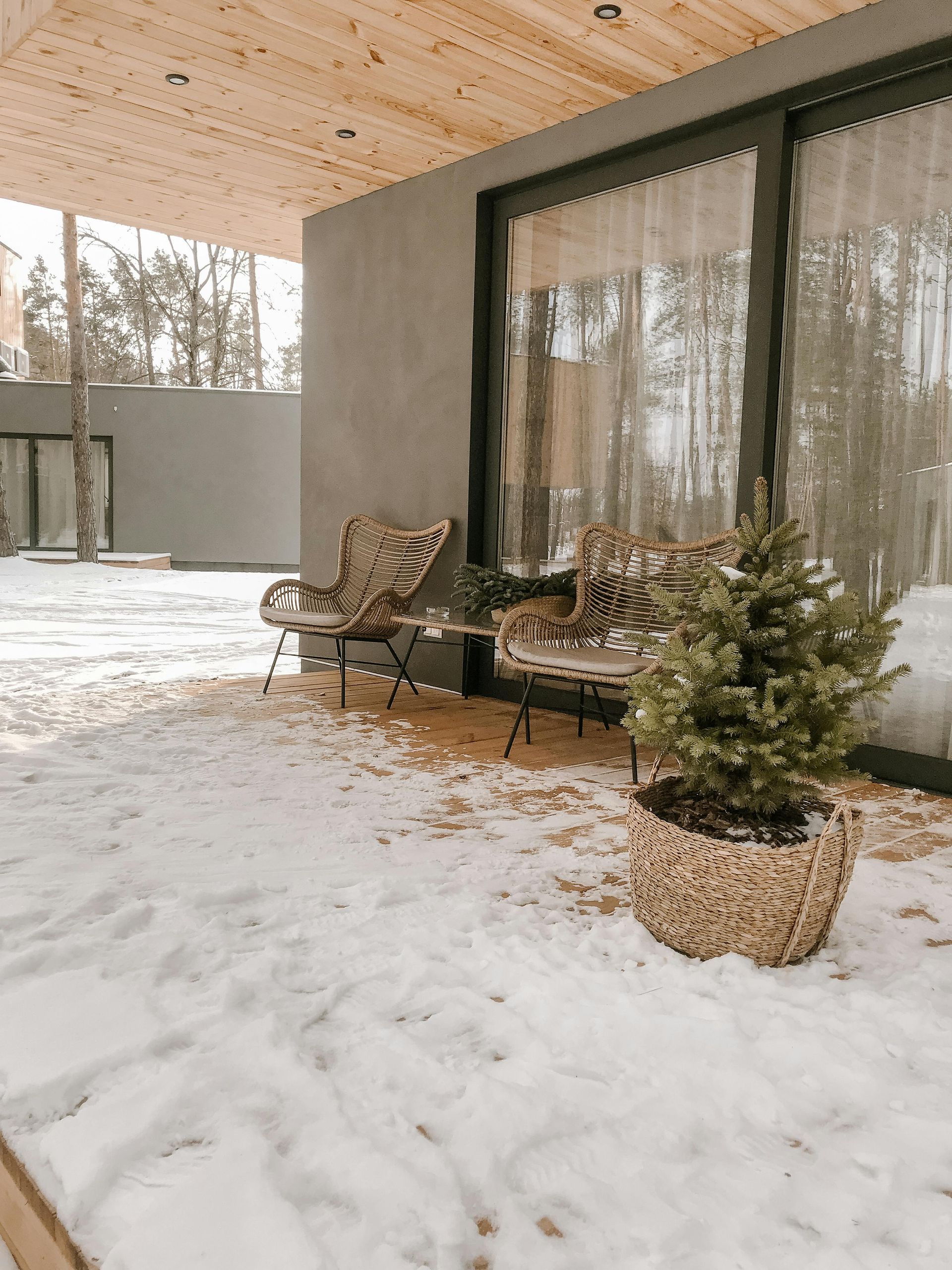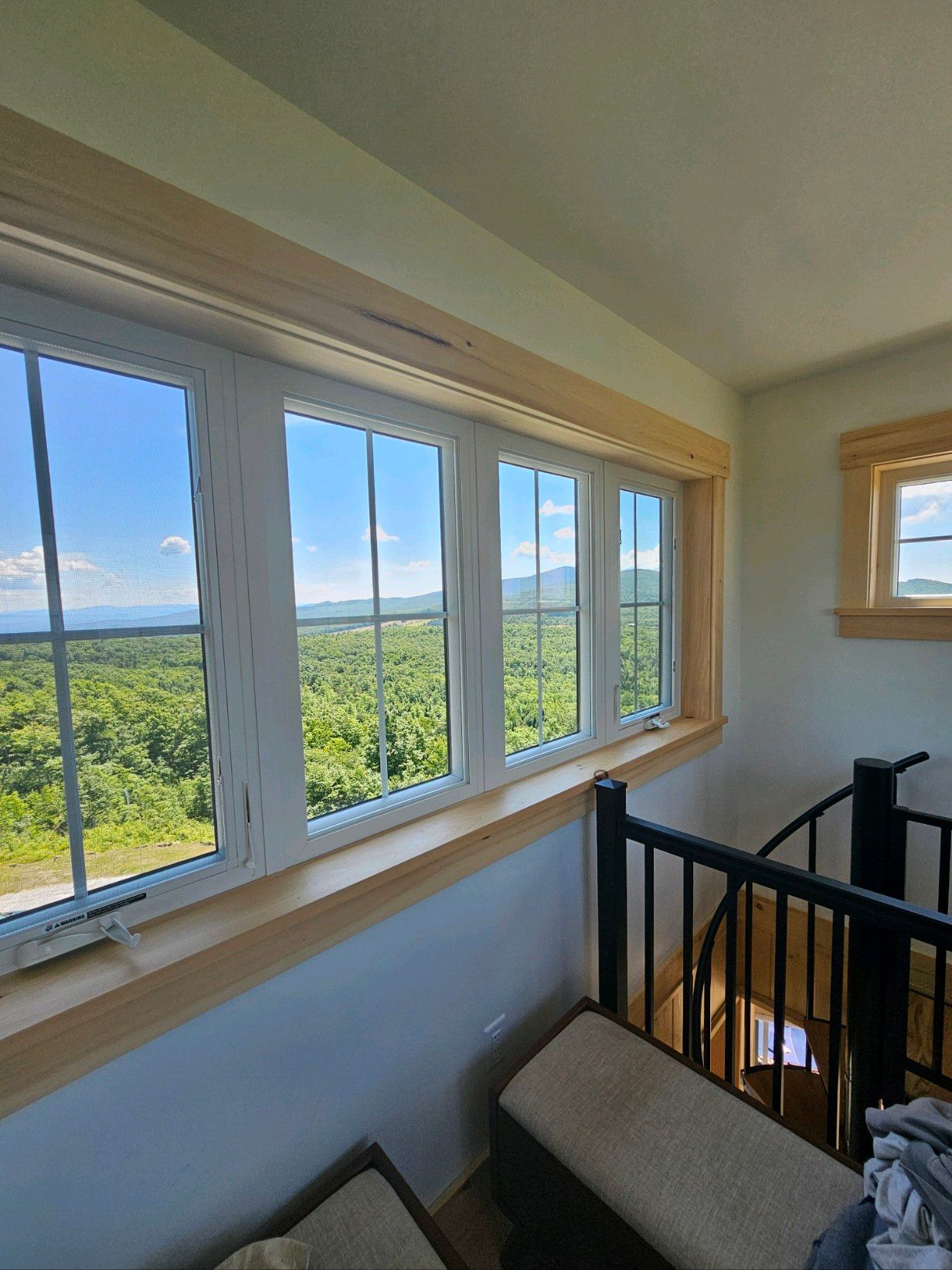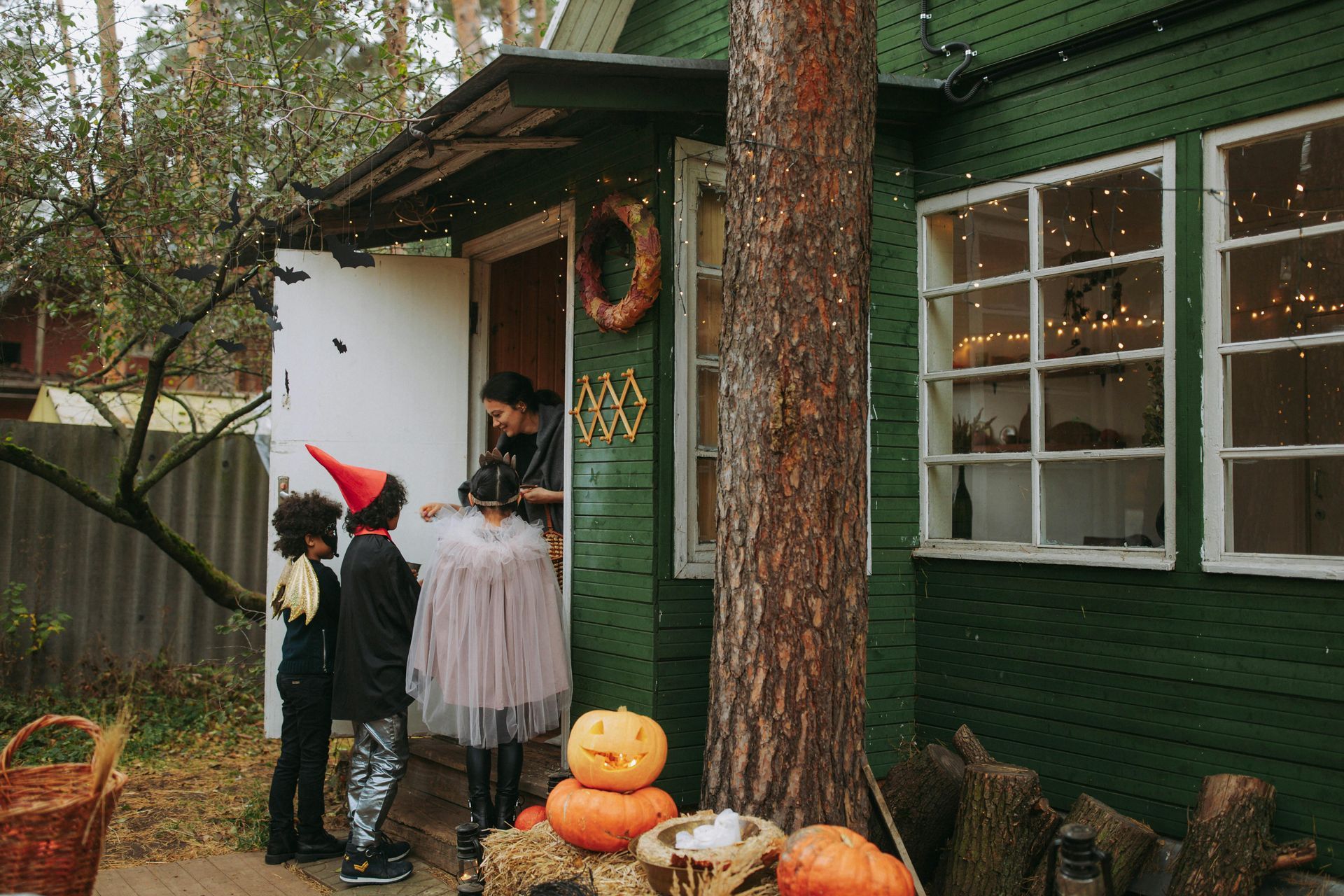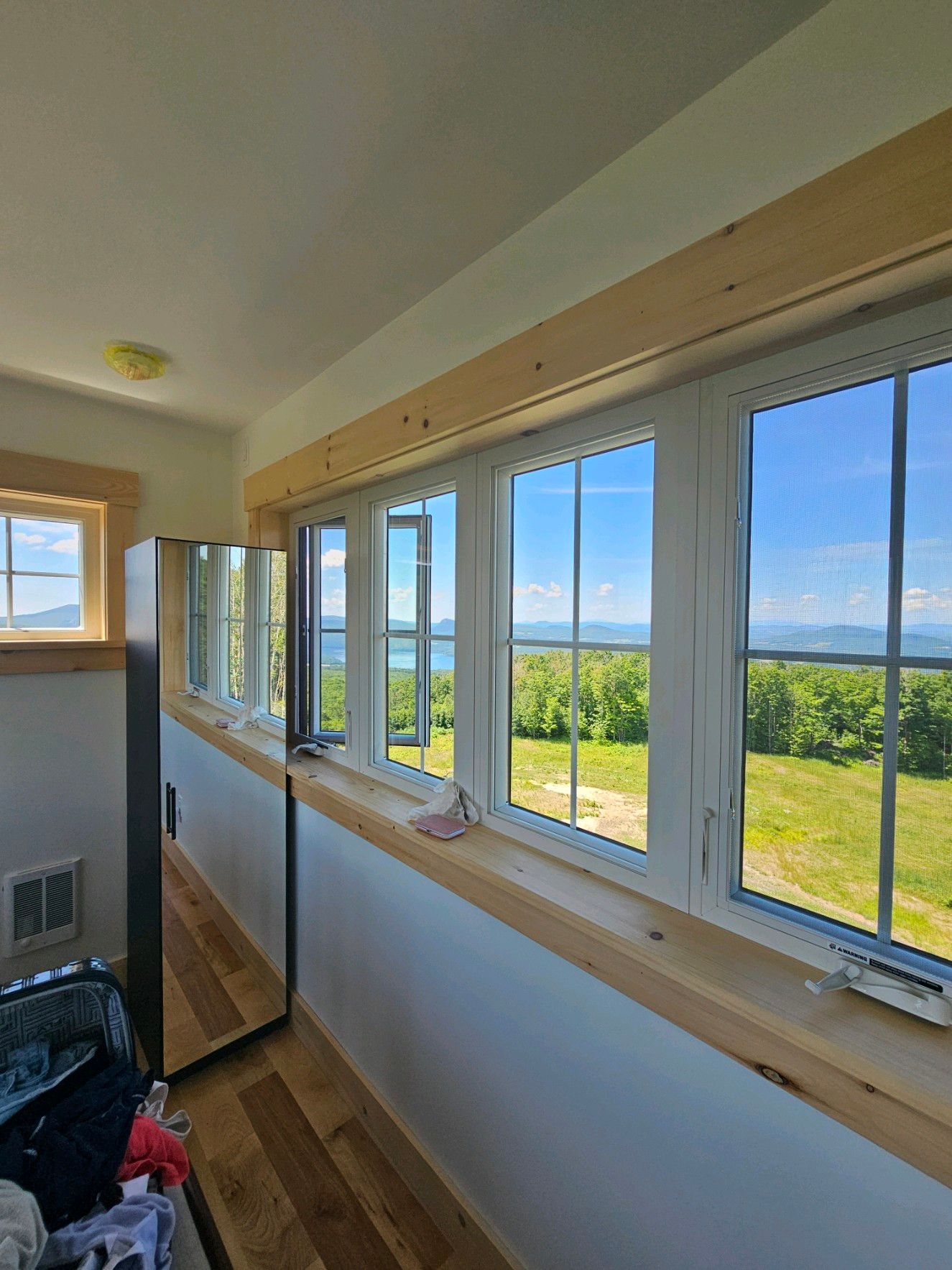Why Restore Your Old Windows: Part 2
Restore Your Old Windows: Part 2

In our last blog, we discussed all the starting points of restoring your old windows. With this second part of our two part blog series, we are going to get our hands dirty. Let's get into the actual work!
Step 1: Remove the Window Sash
The first step in restoring or repairing your double-hung windows is to remove the sash from the jamb. You can conduct some of the repair in place f, but removing the sash is the best option for a complete restoration. This could be simple or tough, depending on how much paint and caulk has been built up. Before proceeding on to the next step, remove both the bottom and top sashes.
Remove the Stop
The first step in restoring or repairing your double-hung windows is to remove the sash from the jamb. This could be simple or tough, depending on how much paint and caulk has been built up. Before proceeding on to the next step, remove both the bottom and top sashes.
The stop is the first thing to take out. This is a little trim piece that is normally fastened in place along the jamb's side. Some of the stops are screwed in place and must be unscrewed and gently pulled off. You'll want to avoid breaking the stops because matching profiles are difficult to come by these days, but if they do, you can replace them with stock moldings from most lumber yards or home improvement stores.
The window stop was designed to be removed in order to service the window, so don't worry if you pry it off incorrectly. It's frequently decades of surplus paint or extra nails from an aggressive handyman that make it difficult.
You only need to remove the stop on one side to get your sash out, but you can remove both if you want to clean them fully.
- With a razor knife, gently score the paint between the stop and the jamb, the stool and the sash, being careful not to gouge the wood. Cut just enough to cut through the paint bond, but not too deeply.
- Gently pry the stop away from the jamb using a trim pry bar or hard putty knife. Instead of finish nails, some stops will be placed using screws and washers. These will have to be unscrewed.
- With a nail puller, remove any leftover nails from the stop by pulling them through the back side of the stop.
- Scrape any built-up paint or caulk from the backside of the stop that runs against the sash with a carbide scraper.
- Set aside the back of the stop to match to the corresponding window and number it to be reinstalled later.
- Remove any nails that may have remained in the jamb.
Remove the Bottom Sash
Because the bottom sash is the most interior, it must be removed first to enable access to the top sash. Because the bottom sash is usually much easier to remove than the top sash, this is where you should begin.
While you can cut the paint off on the exterior, when it comes to the bottom sash, it's usually easier to just focus on the interior and allow the majority of the exterior paint buildup fall off as you remove the sash.
- If your bottom sash isn't painted shut, you won't have to cut any paint or caulk, and it'll be much easier to remove.
- If required, cut the paint seal between the bottom sash and the remaining stop, as well as between the bottom sash and the stool.
- To break the paint seal, insert a hard putty knife between the meeting rails and gently push the sash loose. To remove the sash, lift it above the stool.
- To access the rope mortise on the side of the lower sash, swing the side of the sash inward where the inside stop was removed.
- Remove the knotted rope from the rope mortise, being careful not to lose your grip on the sash or the rope (which is tied to the hidden weights). The rope is sometimes fastened into the side of the sash. To pull the knot out of this nail, you'll have to remove it.
- Allow the rope knot to sit comfortably against the pulley. Tie a larger knot if the knot isn't big enough to keep the rope from dropping back into the pocket.
- Replace the bottom sash and repeat the operation on the other side.
- If you're working on several windows, number the sash on the side so it can be replaced in the correct window later.
- Remove any superfluous paint accumulation on the sash by scraping, slicing, or sanding it away.
Remove Parting Bead
The dividing bead is simplest to remove if the top sash is lowered all the way to the sill. As a result, you'll need to remove the paint and caulk.
Although the separation bead may appear to be painted and caulked to the point where it cannot be removed, it is a separate component that must be removed in order to remove the top sash.
Parting bead is a pain in the neck, but duck-billed vise grips are its worst enemy. Some separation beads will be fastened in place, while others will be pressed into position. The dividing bead must be drawn straight out of the channel it rests in and then removed in either case (often in pieces).
- Using a razor knife or a window zipper, cut the separating bead free of paint or caulk at the top sash.
- Working the sash up and down until it reaches the sill is the goal.
- Start at the top and work your way down, grasping the parting bead with duck billed vise grips and wriggling it back and forth to loosen it.
- If necessary, cut and fit replacement parting beads.
- Remove any excess paint from the separating beads with a scraper.
- Prepare separation beads for reinstallation and painting.
Remove Top Sash
The top sash, oh, the top sash. Most people don't believe this component of the window has ever moved, however they are mistaken on double-hung windows. Before you get too far into this project, double-check that your windows are not single-hung, which means the top sash is stationary and will not move.
Top sashes are frequently so clogged that moving them without a lot of effort is nearly impossible. The top sash will travel all the way down to the sill once it is clean of paint, but getting it there is a challenge. If you have a lot of paint on the sash and it barely moves, keep pushing it up and down to get as much movement as possible.
If the top sash won't go all the way down to the sill, it can still be removed if you lower it enough to uncover the pulleys. Try to swing the side out and remove the sash from the jamb if the pulley is exposed and your parting bead is out.
- With a razor knife or a sash saw, cut the paint seals surrounding the top sash. When the paint seal is broken, the sash saw is useful because it includes small files that sand away the paint deposit in the paint joint.
- Close the top sash and lower it all the way to the window sill. You can continue if the sash won't move due to paint buildup, but the parting bead will be more difficult to remove and may come out in fragments.
- Swing one side of the sash inward and remove the ropes as you did with the bottom sash after the parting bead is out.
- Make sure the sash is numbered.
- Scrape, slice, or sand away any paint accumulation on the blind stop and jamb that may be preventing the sash from moving smoothly.
That concludes our discussion. You've now removed your sashes and can work on them at your leisure before replacing them in the jamb when you're finished. If you plan to leave them out for a longer period of time to conduct your repair, make sure you have some plywood cut to size to cover the entrance or a storm window.
Step 2: Restoring the Jamb
Unless you need to make major repairs to your jamb, this phase is quite straightforward. In most situations, the process is scraping the built-up paint and caulk off the jamb, priming, and painting the jamb to create a smooth surface for your sash to fit into and work on. Any window that has too much built up paint will not perform properly, thus getting down to a flat surface is essential if you want your window to work properly. To keep things clean and safe from lead paint, I use a vacuum scraper during the process, and I recommend the same tool to anyone restoring their windows.
Step 3: Replacing Sash Ropes
A good sash rope will last 60 years or more, and replacing those ropes while fixing your windows is an excellent opportunity to do so. Use a good cotton rope, such as Samson Spot Cord. Synthetic rope, such as nylon, should not be used since it will stretch over time and will not withstand UV damage. Synthetic ropes have been known to fail as early as ten years old in Florida due to the amount of sunlight they are exposed to; they just disintegrate to powder.
The basic procedure is to cut them to length, which you can do by measuring the rope from the top of the pulley to the sill before cutting. Then, on one end, tie a basic knot and feed it through the pulley and down the weight pocket, where you'll tie a bow knot to the sash weight. If you're having difficulties getting the rope down the pocket, try one of these four tricks. I understand your discomfort if your jamb does not have weight pocket access doors. You'll have to cut your own pocket doors if that's the case. It's an extra step, but it'll save you time in the long run.
Step 4: Deglazing
Now that you've completed the sash jamb, it's time to tackle the old sash. The first process is deglazing, which entails removing the old glass so that the sash may be properly repaired. I prefer to soften the putty using a steam box, as seen in the video below, but you can alternatively remove it with a chisel and hammer.
Once the putty is removed, the glass is held in place by small metal glazing pins embedded in the wood. Remove those first before attempting to remove the glass; otherwise, you'll end up with a lot of broken or stubborn glass. They're small and difficult to notice because they're lodged in the putty, but they're there on both sides of the glass and they have to come out.
Step 5: Paint Removal
There are several methods for removing paint from a window sash, but removing the majority, if not all, of the paint is critical to ensure that your next paint job lasts longer and looks better. My favourite way for paint removal, especially for a DIYer, is to use a ProScraper as you did with the jamb, but there are two other options.
The first is an infrared paint remover called the Speedheater Cobra. It works quickly and keeps temperatures low enough to prevent lead paint from becoming a hazard. It's a pricey instrument, but it quickly removes numerous layers of old paint from any wooden surface.
The second tool is more expensive, but it is by far the fastest paint stripper I've ever used. However, if you're not careful, it can be harmful. The Paint Shaver is a grinder with a revolving head of carbide scrapers that shaves paint from the surface. It can potentially shave the wood or your finger if it isn't dialed in properly. It's quick, so proceed with caution.
Step 6: Wood Repair
Now is the time to fix any broken or rotten wood you may have. Making some dutchman repairs or machining new pieces might be the way to go if you're a good carpenter, but for the DIYer, a wood epoxy is the way to go. Abatron manufactures a fantastic two-part structural epoxy product called LiquidWood and WoodEpox that may be used to repair any damaged or missing wood.
The main idea is to dig out the rotten/damaged wood and replace it with epoxy, which may then be molded and sanded to match the damaged portions once it has cured. After the repairs are finished, prime the sash with an oil-based wood primer and prepare it for glazing.
Step 7: Glazing
You have a primed and repaired sash, which means you're ready to clean your glass and glaze your sash. You can remove the residue from your glass with a glass scraper and some glass cleaner before reinstalling it and polishing it.
Bed the Glass
The term "bedding the glass" refers to the process of reinstalling the glass in the sash in a putty bed. This helps to air-seal the glass and prevents condensation from getting behind the glass. Apply strong pressure around the edges of the glass as it is carefully inserted into the aperture. Excess putty will push out the inside as a result.
Insert your glazing points after you have the glass. Before you set your points, double-check that they are securely in place and that the glass is at the desired location. Make sure the glass is evenly set in the puttied glazing rabbet and that the internal side of the glass has only a thin film of putty.
- To determine the right orientation, dry fit the glass into the sash. If necessary, trim the glass.
- In glazing rabbets, apply a little amount of Sarco Type-M (or equivalent) putty and gently press glass into it. Particularly with large pieces, only press the glass around the edges. The core of the glass can be overstressed and break if you press too hard on it.
- Insert at least one glazing point into each side of the glass and an extra point every 12′′ with a point driver or putty knife. (Make sure the tip is put far enough back to be behind the glazing rabbet.)
- Remove extra putty from the inside of the sash and use a profile to make the interior putty flush and smooth.
Finish Glaze
To effectively shed water, properly installed finish glazing putty should be installed at a 45° angle with mitered corners. I won't lie, getting this just right takes some practice. However, the putty does not require precisely glazed windows to function.
When you first pull the putty out, thoroughly mix it to ensure that the oils are evenly distributed throughout the entire batch. If the putty is too cold to work with, knead it a little to warm it up.
- Fill the glazing rabbet with putty.
- To get a good seal, pack putty firmly in the glazing rabbet and glass junction.
- Finish glazing at a 45° angle with a putty knife tool for a smooth finish and tidy mitered corners.
- Using a putty scraper, remove any extra putty.
- Apply whiting to the inside and outside of the glass with an old paint brush. To remove oil spots from glass, work in a circular motion, being careful not to disrupt the putty. Remove any leftover whiting with a blowtorch.
The putty will require time to peel over once your windows have been glazed before painting. Some putties take weeks to cure, while others just take 3-5 days if the temperature is above 60 degrees.
It is dependent on the sort of putty and paint used. Always read the manufacturer's instructions for the putty you're using, and bear in mind that curing times can vary depending on the weather.
Step 8: Painting
It's critical to paint your window sash. All of your hard work is protected by the paint, which ensures that the repairs will last. The epoxy and putty will not last very long if they are not properly painted. You may easily get 20-30 years out of your putty with adequate paint before it needs to be replaced. I'll give a few fundamental rules for painting window sashes below.
Don’t Paint the Sides
Sash sides that glide up and down in the jambs should be left naked. There was no primer and no paint. This may seem strange, yet it has been done for nearly 200 years. There is no cosmetic need to paint these regions because they are not visible or easily exposed to the environment, but there is a more functional reason not to paint them. By leaving these places uncovered, moisture can escape through both the rails (horizontal parts of the sash frame) and the stiles (vertical elements of the sash frame).
Furthermore, these sash pieces slide against the window jamb, and if they are painted (particularly latex paint), they will stick and be difficult to open and shut. Remove everything from it. Because these parts are left uncovered, the entire sash can dry out if it gets wet. Primed and painted wood does not breathe as well as bare wood.
Don’t Paint the Bottom or Top
The top of the upper sash and the bottom of the lower sash should not be primed or painted for the same reasons as the above. When the window is closed, these sections are not visible and so are not exposed to the elements. This will enhance the window's ability to dry out once more. There's not much else to say about this, so let's get on with it.
Apply 2 Coats of Quality Paint
It makes no difference to me whether you use oil-based or water-based paint. The goal is to paint the inside and outside with at least two coats of paint. Also, don't skimp on the paint. Use a high-quality enamel paint. Porch & Floor by Sherwin-Williams is my favorite water-based paint since it's easy to work with and, because it's intended for flooring, it dries rapidly.
Finishing Up
Allow the windows to cure for at least a few days after they have been painted. This may appear to be a simple task, and I'm sure you'd never try to reinstall windows that have been painted with wet paint, would you? It isn't a matter of the windows being dry. It's all about allowing the paint to cure.
It can take up to 30 days for water-based and oil-based paints to fully cure. Until then, scuffs, nicks, and dampness are more likely to damage the paint. Do not attempt to clean or wipe down new latex paint until the 30-day period has expired. You run the danger of ruining your paint work if you don't.
Step 9: Restoring the Hardware
It's a fantastic opportunity to restore the hardware while your paint is setting, and this is one of my favorite parts of the process. It's incredibly easy, and the difference between before and after is incredible.
I remove the paint by boiling it in an old crock pot and then brushing it off with a harsh bristle brush. It only takes a few drops of water and a few drops of dish soap or basic green for the paint to start peeling off after about four hours. After that, polish it using steel wool or a wire wheel to bring out the luster in that ancient hardware.
Step 10: Reassemble Your Window
Install the Top Sash
The top sash is always the first to go in. Attach the ropes to the sides of the sash in the rope mortises and test the sash for smooth operation. It's time to put your parting bead in place if everything is going smoothly.
Set Parting Bead
The term comes from the fact that the dividing bead separates the two sashes. The top parting bead should be installed first, by forcing it into the jamb's groove. If it's too tight, you may need to use a beater block to persuade it to move, or you may need to use a couple of 18 ga. brad nails to keep it in place if it's too loose. Nails are unneeded if it fits snugly, and I avoid them until absolutely necessary.
Once the top is in place, pull the top sash all the way down to the sill and reattach the side parting beads. Once these are in place, you can move on to the bottom sash.
Install the Bottom Sash
The bottom sash should be tied in the same way as the top sash. Test the operation by attaching the ropes on both sides. You can proceed if everything is working well.
Install the Stops
Install the inside stops, leaving enough room between the bottom sash and the stop for a putty knife to fit between them. This little opening limits air infiltration to a minimum while still allowing the sash to move freely. Attach the stop with four or five 18 ga. nails and make sure everything is working properly. Put your hardware on and sit back and enjoy your new old window if you have a smooth, well-balanced window.










